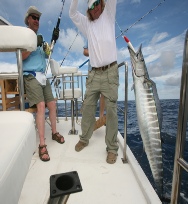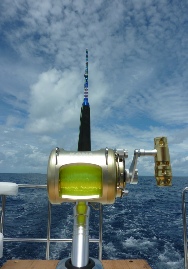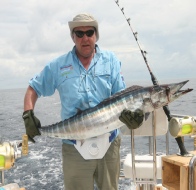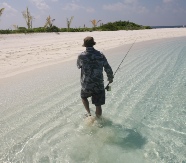© 2014 Gary Smith Fishing Ltd All Rights Reserved










Proudly Associated With


The type of fish you will be targeting in these waters varies greatly depending on where you fish and what seabed terrain you are fishing in. To start with we will concentrate on fishing a sandy seabed with worm bait. The target species has to be the Bream. The Sea Bream is among the 120 species that make up the Sparidae family, mainly found in temperate and tropical waters worldwide.
The most common Bream found here in the waters on this corner of Spain are the Striped Sea Bream known as the Herrera nationally and also the Magret locally. The fish is easily recognizable by the vertical darker stripes that run along its sides between the head and tail. It is mainly a bottom feeder and gives a very light pull on the line when taking the bait so it is wise to let the rod tip move a few times before retrieving, as this particular fish likes to play with the worm before actually being hooked properly. The movements of the rod tip can be up to a minute apart so be patient!
It is a soul destroying experience to start retrieval and find that there is nothing on the hook even though the rod tip has been dipping, so try and make sure the fish is on. One way is lightly by touch. Tension the line just above the reel and see if you can feel a gentle tugging: - this fish does not fight until it reaches the shore, then very little. On the other hand many times I have reeled in and found that a fish is on having not seen any movement of the rod tip or line at all. When reeling in keep it constant and smooth but not too fast, a few gentle knocks will occur as you wind the reel handle and the line loads back onto the spool. As the fish reaches the shore you will start to gauge the size of it. If it is a decent size, maybe half a kilo or so it is critical at this stage as with any fish you land that you do not lose it at this point. Landing fish does come with experience, remember once you see the fish in the surf it can probably see you and is going to fight to get away. As the fish is brought onto the sand this is the point when, if lightly hooked the fish will break free and be lost. When the fish is being reeled into the last metre of water where it meets the sand try and gauge the moment when the fish will come into contact fully with the sand. If the fish is on its side this will be easier. Stop reeling and swing your rod away from the sea in turn sliding the fish in one fluid motion onto the beach keeping the line taught throughout the operation. Then deal with the fish well away from the sea so there is no chance of it been lost. The biggest fish I landed last year escaped because when I unhooked the fish it slipped out of my hands, dropped into the surf where it did some acrobatics and swam off, a hard lesson learnt, I should have known better!!
The best worm to use as bait for the Striped Sea Bream is the Sand Worm (Arena Lombriz) presented on a 2 hook Paternoster. This worm is very thin and long and you will require a thin baiting needle to load the worm onto the hook. If you have difficulty loading the worm onto the needle put some dry sand from the beach into a tray and cover the wet worm in the sand before loading onto the needle to give it some weight. Then it will hang vertically while you proceed with the operation, the worm has to be fed up the line to appear as natural as possible. Always remember to keep your unused worms cool and wet, they come in a plastic tray with sand and water in. I wrap the trays in foil to protect them further in my cool box, also keep checking they are wet, as they will not last long without water. Remember not to keep these worms in the refrigerator, as it will kill them. Just keep them cool and in wet sand using seawater not tap or bottled water. The Striped Sea Bream will also take Coreano, Americana and Coco but the most successful is the Sand Worm as this is its natural food. The required minimum length to keep the fish is 16 centimetres and this must be observed. If it is less return it to the sea. It is no good anglers moaning there are no big fish around if when the small ones are caught they are not released. The maximum length it grows to is around 40 centimetres, if you do catch one of a decent size and take it for the pan, they do taste good!!
Copyright © Gary Smith & Luigi Mateos
Back
| Address |
| Contact Us |
